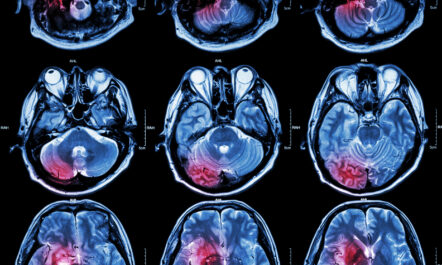News
Summary
In this article, a neurosurgeon shares his experience in an attempt to help men with sexual dysfunction related to common neurosurgical conditions. There are multiple types of sexual dysfunction in men and it is not just erectile dysfunction. Brain surgery and spine surgery, and their connection to sexual dysfunction will be discussed in this article. Sexual dysfunction following spinal surgery can be a source of malpractice litigation for neurosurgeons that is why it is necessary to discuss these issues prior to brain surgery, and spine surgery with your doctor.
Introduction
My name is Dr Ronald Young. I am a neurosurgeon with 55 years experience dealing with complex neurological cases and surgeries.
Normal sexual function is a vital part of a full and enjoyable life. Male sexual dysfunction can lead to broken relationships, depression, and despair. There are many causes of male sexual dysfunction.
In this article, I will share with you my long experience as a neurosurgeon in attempting to help men with sexual dysfunction related to common neurosurgical conditions such as brain tumors, spinal tumors, and ruptured discs, among others.
This article is not intended as medical advice it is simply explaining my experience with patients suffering from sexual dysfunction before or after neurosurgery. Please speak to your doctor or specialist should you be experiencing any symptoms.
Types of male sexual dysfunction
We tend to read and hear a lot on TV about ED or erectile dysfunction, and we might believe that ED is the only form of male sexual dysfunction, but it is not. Neurosurgical conditions can, indeed, cause ED, but they can also cause;
- a lack of interest in sex,
- reduced libido,
- trouble with orgasm and
- issues with ejaculation
I have encountered all of these types of male sexual dysfunction in my neurosurgical career spanning 55 years.
What is normal male sexual function?
Normal male sexual function results from a complicated system of ascending and descending neural activities. The autonomic nervous system is an essential aspect of the normal male sexual process but the somatic nervous system is also intimately involved.
Other functions of the autonomic nervous system include regulating blood pressure, heart rate, sweating, and bowel function, among others. The word “autonomic” refers to the fact that these systems are, to some extent, “automatic.” They tend to work on their own, without intent so that certain stimuli cause automatic reactions.
Male sexual behavior has been described as complex and dependent on intrinsic and extrinsic factors, including olfactory, somatosensory, and visceral cues. In the case of normal male sexual function, arousal is caused by a sexually desirable subject or situation, either imagined, depicted, or real. This aspect of sexual process is generally thought to be located in the frontal lobes of the brain.
Recent studies have shown, however, that “sexual arousal stimuli elicit activity in a broad neural network of cortical and subcortical brain areas that are known to be associated with cognitive, emotional, motivational, and physiological components.”
Progression to erection, orgasm, and ejaculation may or may not follow arousal. These functions depend on a pathway that descends through the brainstem and down the spinal cord to the conus or “cone-shaped” end of the spinal cord. From there, the path extends through the lower sacral nerve roots to the penis by way of the Pudendal Nerves. Ascending stimuli from the penis to the brainstem are usually also necessary for an orgasm to occur.
Normal sexual activity in males is, therefore, a rather complicated neurological interplay between ascending and descending pathways.
Brain surgery and sexual dysfunction
Many different pathologies that affect the brain can cause male sexual dysfunction, but the most common are brain tumors and bleeding around or in the brain caused by ruptured aneurysms. Intrinsic brain tumors in the frontal or temporal lobes such as gliomas or external tumors such as meningiomas that compress the frontal or temporal lobes are causes of male sexual dysfunction.
A recent study showed that 29% of men who underwent surgical resection of low-grade gliomas experienced sexual dysfunction and that sexual dysfunction was more frequent after temporal lobe resections than with extra-temporal resections. The study concluded that “sexual health should consistently be addressed during routine pre- and postoperative examination of patients” with low-grade gliomas.
I once saw a 28 year-old-man with a new onset of seizures whose partner had noted a lack of sexual interest for over one year previously. MRI scan showed a mass lesion, almost isointense with the brain and which did not enhance with intravenous contrast material in the right frontal lobe. I performed a craniotomy and complete resection of a lesion that proved to be a low- grade glioma. He had only a persistent lack of sexual interest post-operatively, but once anticonvulsants were stopped, his sexual interest and performance returned. He remained free of tumor recurrence in a follow-up lasting over ten years.

Benign intracranial tumors, particularly meningiomas, may also be associated with male sexual dysfunction.
Several years ago, I was meeting with a 52-year-old hospital administrator about an administrative matter when he questioned me about some unusual symptoms that he had experienced for over two years. He described episodes that felt as if he were descending on a steep roller coaster with a sensation of his stomach coming up into his mouth. Multiple medical evaluations had proved unrevealing, and his symptoms were attributed to stress and anxiety brought on by his job responsibilities. On further questioning, he revealed that he had a lack of sexual interest and an inability to perform sexually. I suspected that his episodes were due to temporal lobe seizures, and I recommended an MRI scan, which showed a large meningioma beneath the left temporal lobe. I carried out a craniotomy and complete resection of the meningioma. His temporal lobe seizure episodes ceased, and his sexual interest and sexual performance returned within a few weeks of the surgery.
Tumors of the pituitary gland, so-called pituitary adenomas, were shown to cause sexual dysfunction as pre-operative symptoms in 62.6% of two hundred and fifty-four male patients. Even small pituitary adenomas that secrete prolactin can cause male sexual dysfunction.
Several years ago, I saw a 46 year-old-man who complained of sexual dysfunction and galactorrhea. An MRI scan revealed a 5 mm pituitary microadenoma. His serum Prolactin level was over 500. I performed a transsphenoidal resection of the tumor. Post-operatively his Prolactin level returned to normal, galactorrhea stopped, and his sexual function returned to normal.
We don’t usually think of sexual dysfunction when we think of the symptoms of subarachnoid hemorrhage due to ruptured intracranial aneurysms. Still, an interesting recent study demonstrated that 7 of 14 men who had good outcomes after subarachnoid hemorrhage suffered from ED.
Spine surgery and sexual dysfunction
Chronic low back pain is one of the most typical symptoms that cause patients to seek medical and often neurosurgical care. A recent study of Iranian patients showed that 59.5 % of men with chronic low back pain experienced erectile dysfunction, but only 24.5 % of men without back pain complained of ED. The study concluded that sex therapy and sexual management should be included in the care of patients with chronic low back pain. Another study concluded that the pathway from low back pain to sexual dysfunction is via depression and disruption of social and sexual relationships rather than any more specific effects on the neural pathways responsible for male sexual function. I must say that in my practice in caring for many men with low back pain, I have rarely addressed the issue of sexual dysfunction unless surgery was being considered. It appears that I need to reassess my actions in that regard and I urge all patients and practitioners to bring up their sexual health when discussing concerns around the spinal region.
Increasingly, surgical treatment in the form of either lumbar disc replacement or posterior lumbar inter body fusion has been advocated to treat chronic low back pain unresponsive to conservative measures. A randomized control trial found that 26% of men in the fusion group noted a postoperative deterioration in sexual function, but only 3% reported such a decline in the disc replacement group.
Male sexual dysfunction is also common in lumbar disc disease. A 2010 study showed that 55% of men with lumbar disc disease experience sexual dysfunction, including decreased sexual desire, premature ejaculation, and erectile dysfunction. The frequency of intercourse and the frequency of description of any sexual dysfunction both showed statistically significant improvement following successful surgery. The study surmised that physicians do not give sufficient attention to sexual dysfunction in patients with lumbar disc disease. The study concluded that “taking time during examination and giving simple recommendations may improve sexuality and life quality of the patients.”
Unfortunately, male sexual dysfunction is a common side effect of spinal cord injuries that may be managed by neurosurgeons. Fractures of the spine and penetrating spinal wounds, both more common in men than women, that result in spinal cord injuries may result in male sexual dysfunction. These disorders include erectile dysfunction (ED), impotence, priapism, ejaculatory dysfunction, and infertility.
The pendulum has swung back and forth as to whether early surgery is indicated in spinal fracture-dislocations with severe spinal cord injury and associated sexual dysfunction.
More recently, the recommendations have been for early surgical decompression and stabilization with instrumentation and fusion. Unfortunately, such intervention does not often result in improvement in male sexual dysfunction. In a literature report, four of six male patients with thoracolumbar burst fractures had persistent sexual dysfunction following surgical decompression. In another series of 28 patients followed as long as ten years after surgical treatment of sacral fractures, 44% reported persistent sexual dysfunction.
About 15 years ago, I was called to the emergency room to see a 37 year-old-man who had been involved in a hydroplane racing accident. He was unable to move his legs and he could raise his arms at the shoulders but had no other arm function. He had a loss of sensation below the C5-6 level and urinary bladder paralysis. X-rays showed a fracture-dislocation at the C-5-6 level with bone fragments displaced posteriorly, severely compressing the spinal cord. I carried out an immediate anterior surgical approach with removal of the shattered bodies of C 5 and C-5 and replacement with a strut bone graft. Unfortunately, he did not recover neurological function. He remained quadriplegic with a paralyzed bladder and with no sexual function at all for the rest of his life, a devastating injury.
Other spinal cord lesions that may come to the attention of neurosurgeons include spinal cord tumors, either primary or metastatic, herniated intervertebral discs, and spinal hematomas, all of which may be associated with male sexual dysfunction.
In general, any disease process that results in significant compression of either the spinal cord or the nerve roots of the cauda equina can cause male sexual dysfunction. The cauda equina (horse’s tail) is the collection of nerve roots that extends from the end of the spinal cord at the first lumbar spinal segment to their exit foramina below. Of particular interest is the condition called “cauda equina syndrome.” This condition is characterized by variable degrees of weakness and/or sensory loss in the legs but very significantly, interference with normal bowel, bladder, and sexual dysfunction. It is due to compression of the cauda equina, usually by spinal cord tumors, large disc herniations, or spinal hematomas. Emergency surgical decompression is necessary to prevent permanent neurological deficits, but reversal of sexual dysfunction is not guaranteed. In a 2017 report of 75 patients with cauda equina syndrome, 52% of whom were men, who underwent surgical decompression a mean of 48 hours after onset of symptoms, 53% had persistent sexual dysfunction at follow up.
About ten years ago, I was asked to review a potential malpractice action by a 35-year-old man who had undergone surgical treatment of cauda equina syndrome and sustained persistent sexual dysfunction as his only long-term disability. A review of his records showed that he had experienced a spinal injection for the treatment of persistent back pain 72 hours before being seen in an emergency room. He continued to complain of upper lumbar back pain, and he had a very distended urinary bladder and was unable to void. A Foley catheter was placed and drained 1500 ml of urine. A neurosurgical consultation was requested by the ER physician, but the on-call neurosurgeon was occupied in surgery. The neurosurgeon eventually saw the patients some 8 hours later. He documented only mild leg weakness, absent lower extremity reflexes, and no sensory deficit. His diagnosis was lumbar disc herniation.
Over the next 8 hours, the patient’s condition deteriorated, and he developed severe leg weakness and numbness. MRI scan showed an epidural hematoma at the L3-4 level compressing the cauda equina. The neurosurgeon performed an emergency decompression, and the patient recovered all neurological functions except for the persistent and permanent loss of sexual function. In my review of the patient’s records, I noted that the neurosurgeon failed to document a sensory examination of the patient’s perineal region and failed to include the patient’s urinary dysfunction in his diagnosis. He also did not consider the patient’s prior history of the spinal injection, which was the cause of the hematoma. I testified in court on behalf of the plaintiff, but the defendant was found not guilty by the jury. The patient, however, was left with permanent loss of all sexual function despite his persistent desire for sexual activity.
Sexual dysfunction is also common in male children with spinal cord developmental deformities such as spinal dysraphism and tethered spinal cord. One study concluded that surgical untethering rarely improved sexual dysfunction and occasionally made it worse and that individual outcome could not be predicted. The study concluded that “parents and patients have to be informed of this possible complication” when referring to erectile dysfunction.
Discussing sexual health with surgical candidates
A recent survey of neurosurgeons revealed that 73% never or rarely discussed sexual health with their patients who had spinal disorders. The respondents provided several reasons for not discussing sexual health, including the patient’s advanced age, lack of knowledge, and lack of patient’s initiative to bring up the subject as well as lack of time. Fifty percent of respondents in the same study indicated a desire to gain more knowledge about discussing sexual health with patients. Sexual dysfunction following spinal surgery can be a source of malpractice litigation for neurosurgeons, as I illustrated in my case example previously. Patients may allege that they were not told that sexual dysfunction was a possible outcome of spinal surgery or that the procedure was below the standard of care technically and caused sexual dysfunction that was not present preoperatively.
That the failure to discuss sexual function with patients is not limited to neurosurgeons was confirmed in a recent study of cardiologists in which 70% never or rarely discussed sexual function with their patients.
In my practice, I ALWAYS discussed possible sexual dysfunction with my male (and female) patients preoperatively, and I ALWAYS documented that discussion in the medical record. I was employed as an expert witness in several malpractice suits where sexual dysfunction was either not assessed preoperatively and/or not documented preoperatively. Such failures make defending malpractice claims difficult or impossible and can lead to large adverse judgments or settlements.
Considering neurosurgery?
Here is a list of questions to ask your potential neurosurgeon;
- Have you considered the effect of this surgery on my sexual health?
- What precautions will you take to preserve my sexual health?
- What outcome should I expect with regards to my sexual health?
- What rehabilitation and treatment is suitable to improve my outcome?
Conclusion
There may be side effects specifically, sexual dysfunction after a brain surgery, and spine surgery. It is of utmost importance for both the doctor and the patient to discuss possible sexual dysfunction to avoid certain issues such as the malpractice claim and also to address possible rehabilitation and treatment should the sexual dysfunction happen.
References
- Adelved, A., Tötterman, A., Glott, T., Madsen, J.E. and Røise, O., 2012. Functional outcome 10 years after surgical treatment of displaced sacral fractures. Spine, 37(16), pp.E1009-E1016. https://pubmed.ncbi.nlm.nih.gov/22024891/
- Akbaş, N.B., Dalbayrak, S., Külcü, D.G., Yılmaz, M., Yılmaz, T. and Naderi, S., 2010. Assessment of sexual dysfunction before and after surgery for lumbar disc herniation. Journal of Neurosurgery: Spine, 13(5), pp.581-586. https://pubmed.ncbi.nlm.nih.gov/21039147/
- Berg, S., Fritzell, P. and Tropp, H., 2009. Sex life and sexual function in men and women before and after total disc replacement compared with posterior lumbar fusion. The spine journal, 9(12), pp.987-994. https://pubmed.ncbi.nlm.nih.gov/19819762/
- Boemers, T.M.L., Van Gool, J.D. and De Jong, T.P.V.M., 1995. Tethered spinal cord: the effect of neurosurgery on the lower urinary tract and male sexual function. British journal of urology, 76(6), pp.747-751. https://pubmed.ncbi.nlm.nih.gov/8535719/
- Chiu, P.Y. and Liao, J.C., 2019. Surgical outcomes in thoracolumbar fractures with pure conus medullaris syndrome. biomedical journal, 42(4), pp.277-284. https://pubmed.ncbi.nlm.nih.gov/31627870/
- Epprecht, L., Messerli, M., Samuel, R., Seule, M., Weber, J., Fournier, J.Y. and Surbeck, W., 2018. Sexual Dysfunction After Good-Grade Aneurysmal Subarachnoid Hemorrhage. World neurosurgery, 111, pp.e449-e453. https://pubmed.ncbi.nlm.nih.gov/29288108/
- Ferrari, S., Vanti, C., Frigau, L., Guccione, A.A., Mola, F., Ruggeri, M., Pillastrini, P. and Monticone, M., 2019. Sexual disability in patients with chronic non-specific low back pain—a multicenter retrospective analysis. Journal of physical therapy science, 31(4), pp.360-365. https://www.ncbi.nlm.nih.gov/pmc/articles/PMC6451955/
- Johnson, R.D., 2006. Descending pathways modulating the spinal circuitry for ejaculation: effects of chronic spinal cord injury. Progress in brain research, 152, pp.415-426. https://pubmed.ncbi.nlm.nih.gov/16198717/
- Korse, N.S., Nicolai, M.P.J., Both, S., Vleggeert-Lankamp, C.L.A. and Elzevier, H.W., 2016. Discussing sexual health in spinal care. European Spine Journal, 25(3), pp.766-773. https://pubmed.ncbi.nlm.nih.gov/25962812/
- Korse, N.S., Pijpers, J.A., van Zwet, E., Elzevier, H.W. and Vleggeert-Lankamp, C.L.A., 2017. Cauda Equina Syndrome: presentation, outcome, and predictors with focus on micturition, defecation, and sexual dysfunction. European Spine Journal, 26(3), pp.894-904. https://pubmed.ncbi.nlm.nih.gov/28102451/
- Levy, S., Arguello, M., Macki, M. and Rao, S.D., 2019. Pituitary Dysfunction Among Men Presenting with Hypogonadism. Current urology reports, 20(11), p.78. https://pubmed.ncbi.nlm.nih.gov/31734886/
- McKenna, K.E., 2001. Neural circuitry involved in sexual function. The journal of spinal cord med., 24(3), pp.148-154. https://pubmed.ncbi.nlm.nih.gov/11585233/
- Nicolai, M.P.J., Both, S., Liem, S.S., Pelger, R.C.M., Putter, H., Schalij, M.J. and Elzevier, H.W., 2013. Discussing sexual function in the cardiology practice. Clinical Research in Cardiology, 102(5), pp.329-336. https://pubmed.ncbi.nlm.nih.gov/23392531/
- Nikoobakht, M., Fraidouni, N., Yaghoubidoust, M., Burri, A. and Pakpour, A.H., 2014. Sexual function and associated factors in Iranian patients with chronic low back pain. Spinal Cord, 52(4), pp.307-312. https://pubmed.ncbi.nlm.nih.gov/24322217/
- Rahimi-Movaghar, V. and Vaccaro, A.R., 2012. Management of sexual disorders in spinal cord injured patients. https://pubmed.ncbi.nlm.nih.gov/22837080/
- Sakamoto, H., 2012. Brain–spinal cord neural circuits controlling male sexual function and behavior. Neuroscience research, 72(2), pp.103-116. https://pubmed.ncbi.nlm.nih.gov/22101370/
- Seok, J.W., Park, M.S. and Sohn, J.H., 2016. Neural pathways in processing of sexual arousal: a dynamic causal modeling study. International journal of impotence research, 28(5), pp.184-188. https://pubmed.ncbi.nlm.nih.gov/27278664/
- Surbeck, W., Herbet, G. and Duffau, H., 2015. Sexuality after surgery for diffuse low-grade glioma. Neuro-oncology, 17(4), pp.574-579. https://www.ncbi.nlm.nih.gov/pmc/articles/PMC4483080/
- Wen-Jian-Long Zhou, S.C., Ma, M.Z., Chang Liu, X.D.G. and Zhao-Shi Bao, G.J.J., 2018. Risk factors and the prognosis of sexual dysfunction in male patients with pituitary adenomas: a multivariate analysis. Asian journal of andrology, 20(1), p.43. https://pubmed.ncbi.nlm.nih.gov/28816201/
- Yang, C.C. and Jiang, X., 2009. Clinical autonomic neurophysiology and the male sexual response: an overview. The journal of sexual med., 6, pp.221-228. https://www.ncbi.nlm.nih.gov/pmc/articles/PMC2712633/









